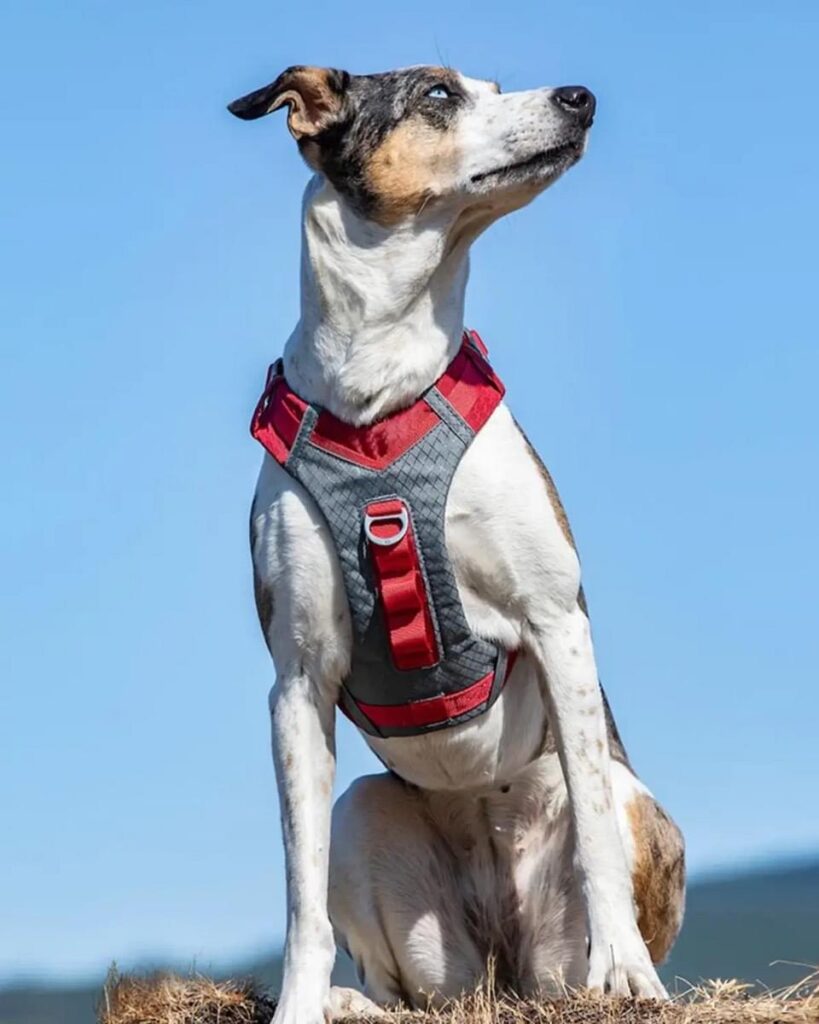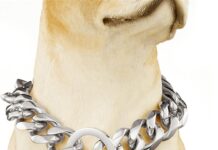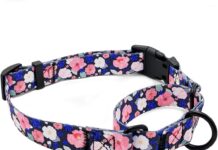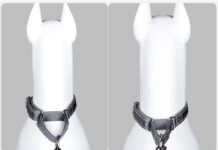When it comes to keeping our furry friends safe and secure during walks, there is often a debate about whether harnesses or collars are the best option. In our quest to find the answer, we turned to the experts themselves – veterinarians. We wondered, do vets recommend harnesses?
After speaking with several trusted veterinarians, it became clear that harnesses are popular among professionals for their many benefits. This article explores why vets recommend harnesses and how this simple gear can make a difference for our beloved pets.
Benefits of Using Harnesses
Reduced Neck and Throat Strain
When walking a dog with a collar, there is a risk of placing strain on the neck and throat, especially if the dog pulls on the leash. However, harnesses distribute the force more evenly across the chest and back, reducing the risk of injury to the sensitive areas of the neck and throat. This can be particularly beneficial for dogs with delicate necks, such as small breeds or those prone to respiratory issues.
Prevention of Injuries
One of the key benefits of using a harness is the decreased risk of injuries. Dogs that tend to pull or lunge on walks can put themselves at risk of neck and spinal injuries when using a collar. In contrast, a harness provides a secure and sturdy connection point, reducing the strain on sensitive body areas. This is especially important for brachycephalic breeds, such as Bulldogs and Pugs, who may be more prone to respiratory issues and neck injuries.
Increased Control and Stability
Harnesses offer greater control and stability compared to collars. The harness design gives the handler a better grip and control over the dog’s movements, making it easier to guide and redirect them when necessary. This can be particularly beneficial when walking in busy or high-distraction areas, as it minimizes the risk of the dog slipping out of the collar or running off uncontrollably.
Better Leash Connection
Harnesses provide a more robust and secure connection point for the leash than collars. With a collar, the attachment point is limited to a small ring or loop, which can quickly become worn or damaged over time. In contrast, most harnesses have a durable attachment point on the back or chest, providing a more robust and reliable connection to the leash. This ensures the leash remains securely attached, even during intense pulling or sudden movements.
Considerations for Choosing a Harness
Size and Fit
Choosing the right size and fit for a harness ensures its effectiveness and comfort. Measuring the dog’s chest circumference accurately and referring to the manufacturer’s size guidelines is essential. A well-fitting harness should be snug but not too tight, allowing for comfortable movement and breathing. Adjustable straps are also beneficial as they allow customization as the dog grows or changes shape.
Material and Durability
The harness material plays a significant role in its durability and comfort. Look for harnesses made from high-quality materials, such as nylon or neoprene, which are durable and lightweight. Additionally, consider features such as padded chest plates or breathable mesh to enhance comfort, especially for dogs with sensitive skin or allergies.
Type of Harness
Various types of harnesses are available, each designed to cater to different needs. Some common types include back-clip harnesses, front-clip harnesses, and no-pull harnesses. Back-clip harnesses are suitable for most dogs and provide a stable connection point on the dog’s back. Front-clip harnesses are designed to discourage pulling by redirecting the dog’s forward motion. No-pull harnesses incorporate additional features such as tightening straps or chest attachments to discourage pulling behavior.
Comfort and Support
Comfort and support should be top priorities when selecting a harness. Look for padded chest plates, adjustable straps, and breathable materials to ensure your dog’s comfort, especially during longer walks or activities. Also, consider any specific needs your dog may have, such as extra support for senior dogs or assistance harnesses for dogs with physical limitations.
This image is the property of cdn11.bigcommerce.com.
Veterinarian Perspective
Positive Views on Harnesses
Veterinarians generally view harnesses positively as they offer several advantages over traditional collars. Harnesses are often recommended for dogs prone to injuries, have neck or throat sensitivities, or exhibit behaviors such as pulling or lunging. They provide a safer and more comfortable alternative for the dog and their handler during walks or other activities.
Situations Where Harnesses Are Recommended
There are several situations where veterinarians may recommend the use of a harness. A harness can alleviate pressure on the neck and throat for dogs with respiratory issues, such as brachycephalic breeds, reducing the risk of further complications. Additionally, dogs prone to spinal injuries, such as Dachshunds, can benefit from a harness’s added stability and support.
Harnesses for Specific Dog Breeds
Certain dog breeds may benefit more from using a harness due to their unique anatomy or predispositions to specific health issues. For example, harnesses are commonly recommended for small breeds, such as Chihuahuas or Yorkshire Terriers, as they are more prone to neck injuries and tracheal collapse. Likewise, harnesses can benefit large or powerful breeds, such as Pit Bulls or Rottweilers, to provide better control and prevent strain on their necks.
Prevention of Health Issues
Harnesses can be crucial in preventing or managing specific health issues in dogs. By reducing strain on the neck and throat, harnesses can help alleviate symptoms of respiratory conditions and prevent further complications. They can also assist in managing conditions such as neck or spinal injuries, where using a collar may exacerbate the problem. Harnesses can promote dogs’ overall health and well-being, especially those with existing health concerns.
Expert Opinions
Veterinary Behaviorists
Veterinary behaviorists often advocate for harnesses, especially dogs with behavior concerns such as pulling or excessive leash reactivity. Harnesses provide a more effective means of control and reduce the risk of exacerbating these behaviors by minimizing any discomfort or strain associated with traditional collars.
Trainers and Dog Behavior Specialists
Trainers and dog behavior specialists frequently recommend harnesses as a training tool to improve leash manners and enhance overall control. A harness’s added control and stability make it easier for handlers to redirect their dogs’ attention and reinforce desired behaviors, leading to more positive and successful training experiences.
Dog Sports Enthusiasts
Harnesses, such as agility, obedience, and scent work, are widely used in dog sports. They offer enhanced control and stability, allowing handlers to guide their dogs through complex maneuvers and activities. Harnesses provide a secure connection point, preventing the risk of dogs slipping out of their collars during high-intensity activities.
This image is the property of chelford.gumlet.io.
Harnesses vs. Collars
Comparison of Harnesses and Collars
Harnesses and collars serve different purposes and offer distinct advantages and disadvantages. While collars are the traditional choice and suitable for many dogs, harnesses provide additional support, control, and comfort. It is essential to consider each option’s pros and cons based on your dog’s needs and behavior.
Benefits of Collars
Collars are lightweight, straightforward, and easy to use. They are suitable for well-behaved dogs that walk calmly on a leash. Collars can also display identification tags and licenses, ensuring your dog can be easily recognized if lost.
Drawbacks of Collars
Collars may pose risks of neck and throat injuries, especially for dogs that pull on the leash or have sensitive necks. They can contribute to respiratory issues in certain breeds and increase the risk of tracheal collapse or other neck-related ailments. Additionally, collars may not provide as much control as a harness, making it harder to manage dogs with high energy or strong pulling tendencies.
Choosing the Right Option
The choice between a harness and a collar depends on various factors, including your dog’s behavior, specific needs, and any existing health issues. Consult with your veterinarian and consider your dog’s breed, size, and individual characteristics. In many cases, a harness is a safer and more comfortable option, especially for dogs with neck or respiratory concerns or who tend to pull or lunge.
Transitioning from a Collar to a Harness
When transitioning from a collar to a harness, it is essential to introduce the new equipment gradually. Allow your dog to become familiar with the harness by letting them sniff and investigate it before attempting to put it on. Offer treats and positive reinforcement during the process to create a positive association with the harness. Start with short harness wear and gradually increase the duration until your dog feels comfortable and adjusted to the new equipment.
Harnesses for Specific Needs
Medical Conditions
Dogs with medical conditions such as arthritis or hip dysplasia can benefit from harnesses designed to provide additional support and alleviate pressure on the affected areas. These specialized harnesses distribute the weight more evenly, reducing discomfort and promoting better overall mobility. Always consult your veterinarian when considering a specific harness for a dog with medical conditions.
Physical Limitations
Dogs with physical limitations, such as amputations or mobility impairments, may require harnesses that offer extra support and stability. These harnesses often come with handles or attachments to assist the dog’s movement or provide extra guidance. They can significantly improve the dog’s quality of life and allow them to engage in activities they enjoy.
Trauma Recovery
Dogs recovering from traumatic experiences, such as abuse or accidents, may benefit from the added security and reassurance a harness provides. Harnesses can help ease anxiety and fear during walks or other activities, allowing the dog to regain confidence in a safe and controlled manner. Consider the dog’s emotional state and consult a professional if needed.
Improving Mobility
Specific harnesses, such as mobility assistance harnesses, are designed to aid dogs with impaired mobility. These harnesses often feature leg supports or handles that allow the handler to assist the dog’s movement. They can accommodate senior dogs or those with degenerative conditions, allowing them to maintain an active and comfortable lifestyle.
This image is the property of www.thesun.co.uk.
Training and Behavioral Considerations
Positive Reinforcement Techniques
Positive reinforcement techniques are crucial when training dogs to wear a harness and walk politely on a leash. Reward your dog with treats, praise, or play whenever they display the desired behavior, such as walking calmly or willingly, allowing the harness to be put on. Positive reinforcement creates a positive association with the harness and reinforces good leash manners.
Training Tools and Methods
Various training tools and methods can be used in conjunction with a harness to address specific behavioral concerns. For example, combining a front-clip harness with reward-based training can help discourage pulling by redirecting the dog’s forward momentum. Consult a professional trainer or behaviorist to determine the most appropriate tools and methods for your needs.
Behavior Modification
Sometimes, behavior modification techniques may be necessary to address problematic behaviors, such as leash reactivity or aggression. A harness can provide the necessary control and stability during behavior modification exercises, ensuring the dog’s and the handler’s safety. Working with a qualified professional when addressing behavior issues is essential to ensure effective and safe training.
Proper Use and Fit
Proper use and fit of a harness are crucial for its effectiveness and safety. Follow the manufacturer’s instructions carefully when putting on and adjusting the harness. Ensure that the harness is snug but not too tight and that all straps are properly secured. Regularly check the harness for any signs of wear or damage and replace it if necessary. Always supervise your dog wearing a harness to ensure they are comfortable and safe.
Common Myths and Misconceptions
Harnesses Are Uncomfortable for Dogs
Contrary to popular belief, harnesses can be comfortable for dogs when correctly fitted and made from high-quality materials. The key is to choose a harness that fits well and does not restrict natural movement. Additionally, gradually introducing the harness and using positive reinforcement can help create a positive association and alleviate discomfort or anxiety.
Harnesses Encourage Pulling
While some dogs may initially pull when wearing a harness, it is not the harness that encourages this behavior. Pulling is often a learned behavior that can be addressed through proper training and leash manners. Front-clip or no-pull harnesses can be helpful tools in redirecting a dog’s forward motion and discouraging pulling behavior.
Harnesses Restrict Natural Movement
When properly fitted, harnesses should not restrict a dog’s natural movement. Choosing a harness that allows for a comfortable range of motion is essential, particularly in the shoulders and hindquarters. Sure, harnesses like those designed for specific medical conditions or physical limitations may have additional support or restrictions. Still, these are intended to aid and improve mobility rather than restrict it.
Harnesses Are Only for Large Dogs
Harnesses are suitable for dogs of all sizes, from small to large breeds and everything in between. Smaller dogs may benefit even more from harnesses due to their delicate necks and propensity for injury. Harnesses are available in various sizes and styles to cater to the specific needs and anatomies of different breeds and sizes.
This image is the property of chelford.gumlet.io.
Consumer Reviews and Experiences
Satisfaction with Harnesses
Many pet owners report high satisfaction with using harnesses for their dogs. They express appreciation for the comfort, control, and stability harnesses offer compared to collars. Dogs wearing harnesses often exhibit improved leash manners and reduced pulling behavior. Harnesses also provide added peace of mind for pet owners, knowing their dogs are safer and more secure during walks or activities.
Successful Use Cases
Pet owners share numerous success stories when using harnesses with their dogs. They explain how harnesses have helped address behavioral issues, such as pulling or lunging, and have made walks a more enjoyable experience for both themselves and their dogs. Dogs with medical conditions or physical limitations have also shown improved mobility and overall comfort when using specialized harnesses.
Unexpected Challenges
While most pet owners have positive experiences with harnesses, there can be unexpected challenges. Some dogs may initially resist wearing a harness or struggle to adjust to the new sensation. It may take patience and persistence to introduce the harness and create a positive association gradually. Additionally, specific harness designs may not be suitable for dogs with specific anatomical quirks, requiring further exploration and possibly trying different harness options.
Recommendations from Pet Owners
Many pet owners strongly advocate using harnesses based on their personal experiences. They recommend considering your dog’s specific needs and behavior when selecting a harness. Choosing a harness that fits well and is made from durable materials is also essential to ensure long-term satisfaction. Seeking guidance from veterinarians, trainers, or fellow pet owners can provide valuable insights and recommendations.
Conclusion
Harnesses offer a range of benefits over traditional collars, including reduced neck and throat strain, prevention of injuries, increased control and stability, and better leash connection. Considerations such as size and fit, material and durability, type of harness, and comfort and support are crucial when choosing a harness. Veterinarians generally have positive views on harnesses and may recommend them for specific dogs and situations. Expert opinions from veterinary behaviorists, trainers, and dog sports enthusiasts further support the usefulness of harnesses.
While collars have benefits, harnesses often provide a safer and more comfortable option, especially for dogs with neck or respiratory concerns or those prone to pulling. Harnesses can be particularly beneficial for dogs with specific needs, such as those with medical conditions, physical limitations, trauma recovery, or mobility improvement. Training and behavioral considerations are essential when using harnesses, and positive reinforcement techniques, proper use, and fit are essential.
Dispelling common myths and misconceptions surrounding harnesses, consumer reviews and experiences showcase high satisfaction levels with harness use. Success stories highlight the positive impact on leash manners, behavior modifications, and overall dog comfort. Recommendations from pet owners emphasize the importance of considering individual dog needs and seeking professional guidance.
In conclusion, harnesses are a valuable tool for dog owners. When making an informed decision, consulting with a veterinarian and considering the dog’s specific needs is essential. Harnesses offer safety, comfort, and control, enhancing the overall well-being and enjoyment of walks and activities for dogs and their owners.
This image is the property of pet-how.com.













































